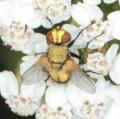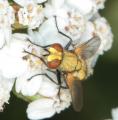Diptera.info :: Identification queries :: Diptera (adults)
Who is here? 1 guest(s)
|
Micropezidae Neria longiceps
|
|
| helge |
Posted on 03-12-2019 17:09
|
|
Member Location: Austria Posts: 1322 Joined: 10.02.16 |
Location: Austria April 2016 Thank you for your help! Helge helge attached the following image: 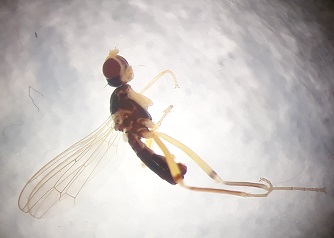 [37.76Kb] Edited by helge on 09-01-2020 10:01 |
|
|
|
| helge |
Posted on 03-12-2019 17:09
|
|
Member Location: Austria Posts: 1322 Joined: 10.02.16 |
2
helge attached the following image: 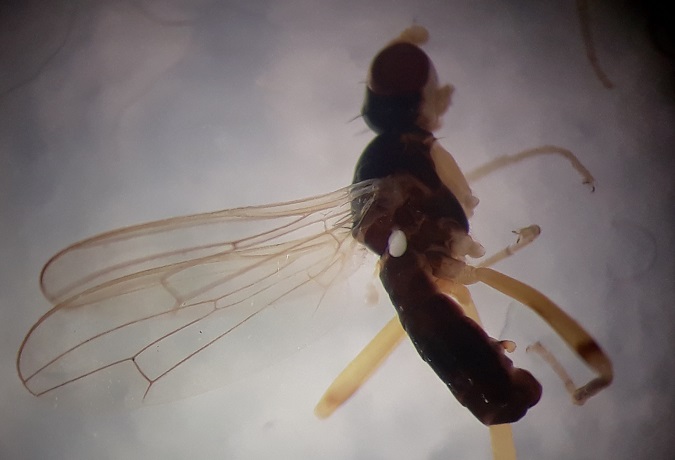 [74.92Kb] |
|
|
|
| helge |
Posted on 03-12-2019 17:10
|
|
Member Location: Austria Posts: 1322 Joined: 10.02.16 |
3
helge attached the following image: 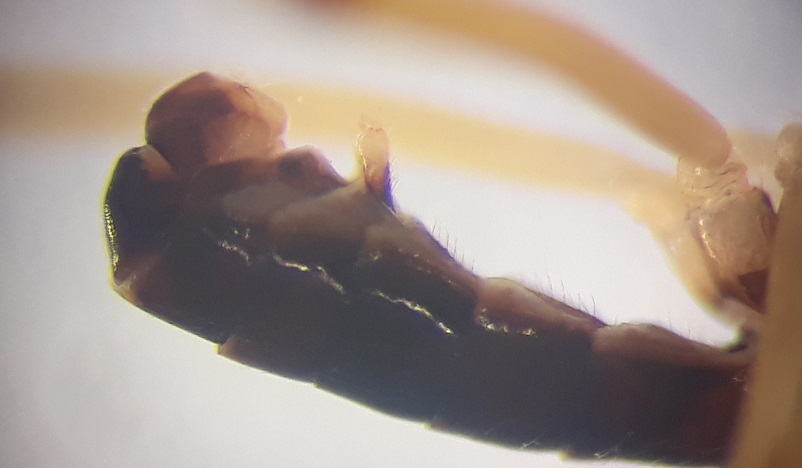 [80.39Kb] |
|
|
|
| helge |
Posted on 03-12-2019 17:10
|
|
Member Location: Austria Posts: 1322 Joined: 10.02.16 |
4
helge attached the following image:  [56.03Kb] Edited by helge on 03-12-2019 17:11 |
|
|
|
| Darwyn Sumner |
Posted on 04-12-2019 08:58
|
|
Member Location: UK Posts: 146 Joined: 19.02.05 |
Tricky, I don't see enough to be comfortable with Micropezidae. Perhaps someone more familiar with wing venation can do better. The nearest, with that kind of genitalia, is Neria ephippium (http://micropezid...my/term/23) but I can't see other confirmatory features. Take a look at Dick Belger's image of the male at https://waarnemin...ies/80715/ You have the specimen so try my test key at http://micropezid...o/node/235 I do hope someone will contradict us. |
| Ectemnius |
Posted on 04-12-2019 16:36
|
|
Member Location: The Netherlands Posts: 845 Joined: 22.11.11 |
Hello helge & Darwyn, Of the family I can be sure, it is definately a Micropezidae. However, I'd say this is not a Neria ephippium looking at the sternites. More a Micropeza sp. But not a species we have in the Netherlands I suspect... Kind regards, Ectemnius |
|
|
|
| helge |
Posted on 04-12-2019 20:41
|
|
Member Location: Austria Posts: 1322 Joined: 10.02.16 |
Hi Darwyn & Ectemnius, Thank you for your help! @Darwyn: Thank's for your hint, I tried the key and it lead me to M. kawalli - but this species is only known from Lithuania... Best wishes, Helge |
|
|
|
| Paul Beuk |
Posted on 08-01-2020 16:29
|
|
Super Administrator Location: Netherlands Posts: 19303 Joined: 11.05.04 |
With specimens under the microscope it took a little digging but in the end it was your own key that pointed me in the right sirection, Darwyn. The scutellar setae not being at the adge of the scutellum lead me to 'Calobatella longiceps'. Checking further literature I found it is now in the genus Neria. I also checked Ozerov's 1991 paper synonymizing Calobatella with Neria, but I could find no illustration of the male genitalia. The descriptions are generally useful but somewhat misleading is that none of the descriptions seem to mention that the hind tibiae at least have an anterior and posterior dark stripe along the whole length but that these stripes are often fused, resulting in all darkish hind tibiae. Ozerov's paper (and I read it somewhere, too) suggest that in lateral view the eyes may be somewhat triangular, but that is not the case in any of the specimens I have seen. The hind femora in the photographed specimen show just the slightest darkening before the preapical band. The extend of this darkening is very variable in the specimens sent. Apparently the species had not been recorded froim Austria before but it was found in many of the surrounding countries (not in Switzerland and Italy). Paul - - - - Paul Beuk on https://diptera.info |
| Darwyn Sumner |
Posted on 08-01-2020 18:11
|
|
Member Location: UK Posts: 146 Joined: 19.02.05 |
That's good that you got hold of a specimen and were able to examine it in detail Paul. Walter Pfeigler has an image of the female on this site at https://diptera.i...ost_123106 The rather long head seems to be the first character to notice. The occiput width being very obviously greater than in other Neria giving the head a somewhat elongated appearance. Since you have a male is there any chance you could get drawings done of the genitalia. Also Heige, could you be more precise about location (a lat/long would be great - just use Google Earth). And any idea about habitat would be valuable too. Edited by Darwyn Sumner on 08-01-2020 18:12 |
| Paul Beuk |
Posted on 08-01-2020 18:31
|
|
Super Administrator Location: Netherlands Posts: 19303 Joined: 11.05.04 |
The images posted above will give you the neeed info for now. I guess we should prepare a publication on this record (1 male and 17 females!) and then we can include better illustration. The coordinates are 46°39'22.78"N 15°31'21.46"E.
Paul - - - - Paul Beuk on https://diptera.info |
| helge |
Posted on 09-01-2020 10:25
|
|
Member Location: Austria Posts: 1322 Joined: 10.02.16 |
Hi Paul and Darwyn! About the habitat: The entire region is characterized by viticulture (climate: warm & rather dry). The owners of the property have been running a "Biobauernhof" for years (extensive grazing by sheep, little use of pesticides; cultivation of wine, peach, apple..). The malaise trap was set up near a peach plantation. Helge |
|
|
|
| Paul Beuk |
Posted on 09-01-2020 11:07
|
|
Super Administrator Location: Netherlands Posts: 19303 Joined: 11.05.04 |

Paul - - - - Paul Beuk on https://diptera.info |
| Jump to Forum: |









